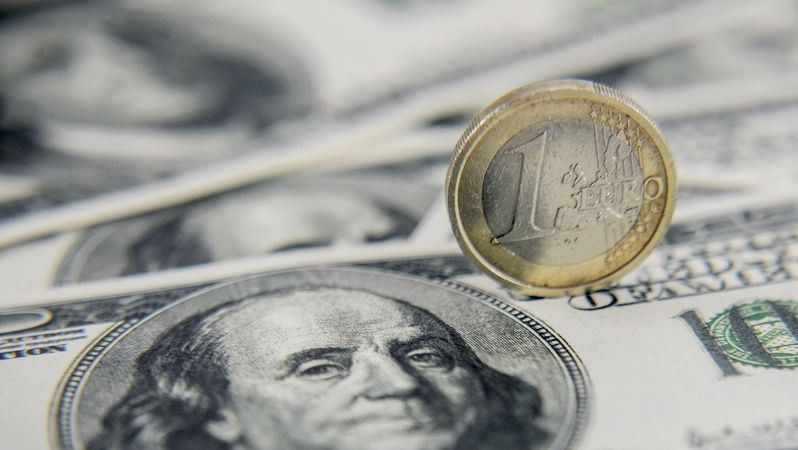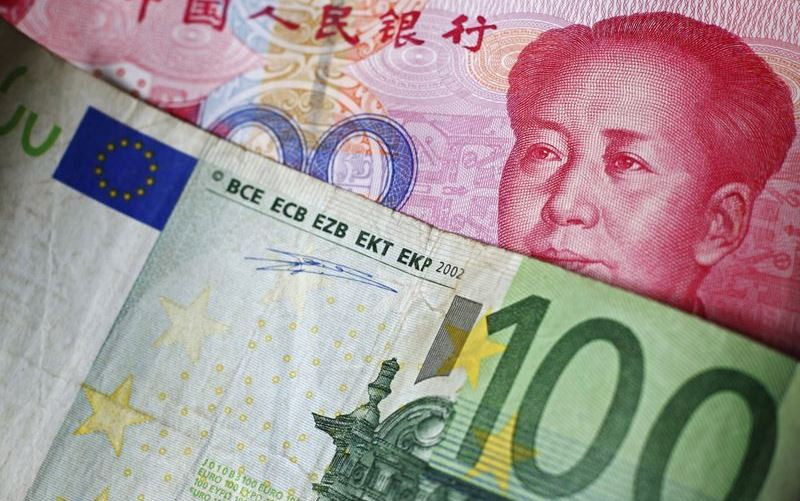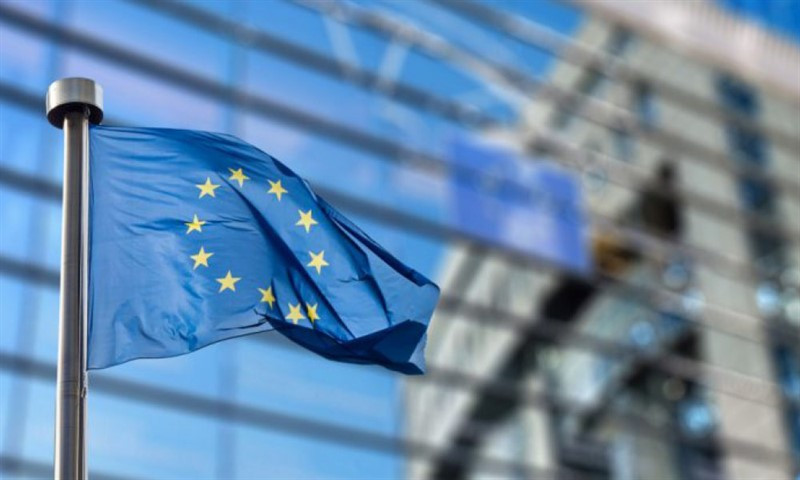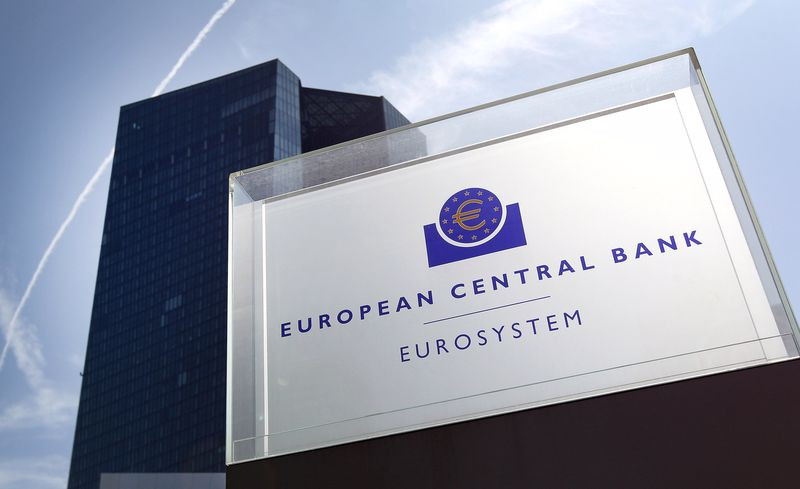
The greenback continues to crowd its main competitors in Forex, despite the intensified debate about the future reserve status of the dollar in the international arena.
According to experts, investors should separate long-term trends and short-term market impulses.
Until the end of World War II, the function of the global reserve currency was performed by the British pound, but in 1945 it was replaced by the greenback.
Since then, USD has remained an instrument of international settlements and an important component of the foreign exchange reserves of many countries. The credibility of it is explained by the economic and political stability of the United States.
According to the International Monetary Fund, the dollar's share in the foreign exchange reserves of the world's central banks at the end of last year was 58.8%. This is down from 59.2% in the previous quarter, and is the lowest since tracking comparable data in 1999-2000. This is a long-term trend - the share of greenback in known reserves in 2002 was more than 70%.
The Bank for International Settlements estimates that the dollar was bought or sold in about 88% of global foreign exchange transactions in 2019.
According to the UN Conference on Trade and Development, about 40% of global transactions with goods are paid in US currency.
The period 2000-2020 was marked by a sharp increase in demand for dollar reserves from Asia after the 1997 crisis, as well as the acceleration of globalization and cross-border capital flows and trade.
Analysts admit that in the next 20 years these trends will not be so strong, so the demand for the US currency will decline, albeit slowly and slightly. However, the same will happen with the demand for all other reserve currencies, and this does not mean that the dollar will lose.
"Don't forget that it took two world wars and Britain's loss of empire status for the pound to lose the title of No. 1 reserve currency in the world," said economists at UBS Global Wealth Management.
Barry Eichengreen, a professor at the University of California, and his colleagues argue that the unique status of the dollar will gradually decrease as a more multipolar world is formed. They refer to a report published last month by the IMF, according to which central bank reserve managers have been actively diversifying portfolios into "unconventional" currencies for many years.
Columbia University professor Adam Tooze does not dispute this view, but points out that many of these currencies, such as the Canadian and Australian dollars, are largely part of America's expanded financial security system, protected and supported by dollar swap lines between their central banks and the Federal Reserve.

The main long–term competitors of the dollar in terms of official reserves or the use of the currency as a "vehicle" - for billing – are the Chinese yuan and the euro.
However, there are many reasons why it will take years before they are considered as safe, liquid and affordable as a greenback.
For example, the eurozone is experiencing a shortage of high-quality assets that central banks can use as a means of saving, and some international investors may be scared off by the internal policies of the 19-country bloc.
In the case of China, it may take decades – the yuan is not fully converted abroad. In addition, Beijing is not eager to throw the dollar "off the pedestal", as this will lead to the accumulation of Chinese currency by investors and allow foreigners to buy out parts of Chinese business. This problem is especially acute in the construction sector of China, which remains one of the most closed and profitable in the country.
Although some countries may reduce the share of USD in reserves or transfer part of their payments to local currencies, this will not cause serious damage to the dollar yet.
Thus, the greenback is likely to remain the world's main currency for the coming decades.
Joey Politano of the U.S. Bureau of Labor Statistics believes that the dollar's status as the leading reserve currency is so strong that it is almost impregnable.
"No other country in the world, like America, has a proper combination of deep capital markets, clear rule of law, such economic power and technological dynamism," he said.
On Thursday, the USD index updated the highs since May 2020, rising above 99.80 points, after which it retreated somewhat.
Although the 100.00 mark remains elusive for dollar bulls, the path of least resistance for the US currency still lies to the north.
The Fed's intentions to aggressively tighten policy are fueling interest in dollar-denominated assets, promising higher returns.
If we add here the further escalation of the Russian-Ukrainian conflict, a new batch of Western sanctions against the Kremlin, the outbreak of coronavirus in China, then a breeding ground is created for a new wave of strengthening of the greenback.
In such conditions, investors are in no hurry to abandon the protective dollar.
According to the latest data from the Commodity Futures Trading Commission (CFTC), speculators' net long positions on USD have reached an 11-week high.
The US central bank is now trying with all its might to keep the national currency afloat, fearing to lose one of the most powerful tools in the fight against inflation at the most inopportune time, when geopolitical uncertainty casts a shadow on economic prospects.

The minutes published the day before from the March FOMC meeting showed that many of its participants expressed their willingness to raise interest rates in increments of 50 basis points at upcoming meetings.
They also showed a general agreement on the reduction of assets by $95 billion per month, which rose sharply during the pandemic.
The central bank has made it clear that it is likely to start writing off assets from its balance sheet at a meeting to be held in May and will do so almost twice as fast as during the previous quantitative tightening, as it faces inflation that has reached a 40-year high.
"The minutes from the March FOMC meeting show that many officials are in favor of one or more increases in the key rate by 50 bps and aggressive rates of reduction of the balance sheet in the amount of $95 billion per month, which will occur in stages over three months starting in May," Westpac analysts said.
"Since the focus is now shifting to reducing the balance sheet, the difference in profitability further along the treasury curve should begin to change more significantly in favor of the US dollar. In the near future, the USD index may test the level of 100. A clean break of this mark will bring into play levels in the 100.50-100.90 zone," they added.
ING strategists also expect that the greenback will soon test the 100 mark. Everything indicates that the Fed is pushing hard on the monetary brakes, which should be positive for the dollar, they note.
"This year we expect some aggressive tightening by the US central bank. We think the federal funds rate is likely to reach 3% in the first quarter of next year," ING said.
According to the bank's forecast, the dollar can stay on the growth trajectory for most of 2022.
Few central banks will be able to match the pace of Fed policy tightening this year, and the greenback should remain strong, especially against such low-yielding currencies as the euro, according to ING.
The EUR/USD pair continued to bear losses on Wednesday and closed in negative territory, around 1.0900. On Thursday, the pair updated monthly lows in the area of 1.0865, after which it recovered somewhat. However, the pair still lacks bullish momentum, so it is too early to rule out further losses.
Over the previous five trading sessions, the euro has fallen in price against the US dollar by more than 2%. This dynamic was mainly facilitated by geopolitical risks and anti-Russian sanctions.
Recent talk of expanding Western sanctions against Russia has not benefited the euro, which is bad news for the eurozone economy, according to strategists at National Bank of Australia.

On Thursday, the head of EU diplomacy, Josep Borrell, said that on April 11, the EU foreign ministers will discuss sanctions against Russian oil.
According to him, this issue is not in the package of sanctions that is being discussed today, it is only about coal.
Borrel also expressed hope for the approval of the fifth package of sanctions against Russia. He expects that this package will be finally approved first by the permanent representatives, and then by the Council of Foreign Ministers in a written procedure.
Earlier, EU diplomats failed to agree on a new package of sanctions against Russia.
The divisions in Europe have become more apparent this week. After Lithuania announced on Saturday that it would stop importing Russian gas for domestic consumption, Austrian Finance Minister Magnus Brunner spoke out against sanctions on Russian oil and gas, saying they would cause more damage to Austria than to Russia.
The lack of unity among European politicians on the issue of restricting energy imports from Russia means that Brussels has limited opportunities to further strengthen sanctions pressure on Moscow, experts say. Now there will be a search for various mechanisms, someone will insist on the continuation of sanctions pressure, someone will advocate negotiations, and it will only become more difficult to agree on a single European position over time, they say.
As long as the risk of stopping the import of certain energy products to the EU from Russia or even a complete energy embargo persists, the euro will remain under pressure, according to Commerzbank.
"It probably doesn't help the single currency much that the ECB is expected to announce the end of its expansionary monetary policy at the end of the year. In such uncertain times, it is difficult to say what else can happen during this period. The risk that the ECB will change its mind at the last minute remains, and for this reason it is difficult to imagine that the euro can recover steadily in the short term," the bank's strategists noted.
MUFG economists hold a similar opinion.
"The price dynamics still strongly suggests that some form of de-escalation of the Russian-Ukrainian conflict will be required to cause a reversal of the current bearish trend in the euro," they said.
"In the current conditions, the euro may continue to remain weak in the near term, unless the ECB presents the markets with a big hawkish surprise that could cause a revision of expectations for an earlier rate hike in the third quarter. The next important level of technical support worthy of attention is the March 7 low, which is at the level of 1.0806," they added.
According to some estimates, last month European equity funds faced an outflow of $27 billion for the first time since March 2020. At the same time, US equity funds received $20 billion.
The divergence in flows underscores the reluctance of investors to work in markets that are considered vulnerable due to the ongoing conflict between Kiev and Moscow, as well as due to Europe's closer trade ties with Russia and Ukraine.
The profits of large and medium-sized companies in the eurozone are expected to grow by about 4% this year, which is much less than the projected profit growth of American companies by more than 10%.
Thus, investors "vote" for America instead of Europe because of the economic prospects. This does not add to the optimism of the single currency, nor does the fact that monetary policy in the eurozone promises to remain more "soft" in the foreseeable future to support growth and reduce the debt servicing costs of national governments.
FOMC officials practically agreed that one or more rate hikes of 0.50% at once may be required, taking into account inflation significantly exceeding the Fed's target.

Meanwhile, the European Central Bank is faced with a dilemma that could further split the ECB's Governing Council on setting interest rates. Hawks are already calling for a rate hike to combat high inflation, and doves say that such a move could push the eurozone economy into recession.
Inflation in the currency bloc is high, so the ECB may soon need to raise interest rates, Bundesbank President Joachim Nagel said on Wednesday.
"What we are seeing at the moment suggests that depositors may soon expect higher interest rates again," he said.
At the same time, ECB chief economist Philip Lane argues that it is important for the central bank not to overreact to the surge in inflation.
Currently, the EUR/USD pair is showing a moderate rebound after reaching new monthly lows earlier on Thursday. The current recovery is seen as a temporary phenomenon, and at the moment there is a prospect of further decline.
Therefore, it should not be surprising if the EUR/USD pair rewrites the lows of March in the coming days, dropping below 1.0800, and then goes in search of a "bottom" until the end of the year with the potential to decline to 1.0500.
However, the pair may touch this mark earlier.
In addition to the Russian-Ukrainian conflict and the actions of central banks, the focus is now on the presidential elections in France.
Tensions in the election race in France are growing. Marine Le Pen's victory may lead to a decrease in the EUR/USD pair to 1.0500, according to ING.
"Although today the so-called "Frexit" poses less risk than in 2017, concerns about Le Pen's victory and what it will mean for the unity of EU policy simply puts another bearish claw to the throat of EUR/USD. A good speech by Le Pen in the first round and an unexpected victory in the second will lead to the pair trading at 1.0500," the bank's specialists noted.
The first round of the French presidential election will be held on Sunday, April 10. If none of the candidates wins a majority of votes in the first round, a second round will be held on April 24 between the two best candidates.
The market is far from putting a serious risk of Le Pen's victory in the prices. However, the EUR/USD pair may drop to 1.0500 if Le Pen wins, Credit Suisse economists believe.
"Our current expected low for EUR/USD in the second quarter at 1.0750 does not include Le Pen's victory. If this happens, we suspect that testing of the 1.0500 mark will follow relatively quickly," they said.





















